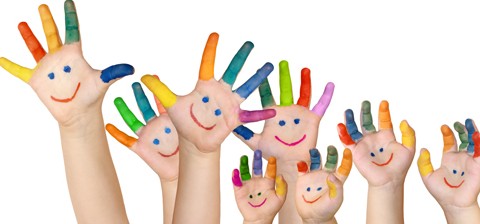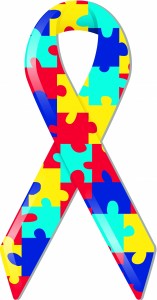Why Autism Often Goes Unnoticed In Girls

Generally, when people think of autism, their minds automatically conjure up of a picture of a male. And why is that the case? Well it’s pretty simple…in our society, autism is stereotypically associated with boys. Popular movies such as Rain Man, have helped to form our views by linking males with autism. How many movies can you think of that focus on females with autism? None? We also associate predominantly male characteristics, such as a focus on structures and technical systems with autistic behaviours. But most importantly of all, perhaps our stereotypical view is based on the fact that only 1 in 4 people diagnosed with autism are indeed female. Unfortunately these stereotypical views mean that autism therefore often goes unnoticed or undiagnosed in girls, leading to an emotional roller coaster for the child and their family.
So what is autism? According to Autism Spectrum Australia, “autism is a lifelong developmental condition that affects, among other things, the way an individual relates to his or her environment and their interaction with other people.” Because autism is on a spectrum, every person will experience a different degree of symptoms.
Image: Baylor University
Autism has a very real affect on a child’s experience within the classroom. Some children with autism will be able to work successfully within a mainstream classroom, with appropriate structures and strategies in place. Other children will require more specialised support. Generally, children suffering from autism will display difficulties with social communication and interaction, as well as repetitive or restricted behaviours and interests.
It’s so important for teachers to recognise that autism affects girls as well, and to ensure that it does not go undiagnosed within their classroom.
Image: The Autism News
A few years ago, I taught a young girl who had been diagnosed with autism. In general, she was able to participate fully in our class activities. However, her interests, or should I say, interest, was Star Wars. That’s it. In our writing sessions she would write about Star Wars, during reading sessions she would race through our class books so that she could read her Star Wars book, during maths I would find her counting her Star Wars figurines, and at recess and lunch she would sit on her own playing with those same Star Wars toys. Whenever her classmates would ask her if she would like to play with them, she would always look at them startled and reply ‘no, I’m playing Star Wars’. And if anyone asked to join her, they would usually be told ‘no, these are my Star Wars’.
This was a very, very intelligent child. She was at the top of the class academically and yet she had very little understanding of what was going on socially around her and found it incredibly difficult to communicate with her classmates. She would often end up in fits of tears, lashing out or screaming at another child simply because she didn’t understand something (usually a social interaction) that had happened in the playground or the classroom. This child demonstrated the classic behaviours of autism, but that didn’t mean that she had to struggle at school. It just mean’t that I had to change the way I taught her. I implemented strategies that improved the structure of the class. We had timetables for EVERYTHING! I gave her a clock for her desk so that she knew exactly what the time was and how long until the next session (this worked really well in improving productivity during each session!). I also started teaching social stories to the class. We would use storyboards and act out different social situations.
Image: Georgia Tech
Having a child diagnosed with autism in my class changed the way I taught. It sure did. But every other child in my class changed the way I taught too. That’s what it means to be a teacher – you adjust your teaching to suit the strengths, weaknesses and learning styles of every single individual child.
Thankfully, this beautiful little girl in my grade was one of the lucky ones. Her parents had noticed certain behaviours and taken her to a specialised doctor who had diagnosed her as being on the autism spectrum. Had she not been diagnosed, this little darling would have struggled through school, with her parents and teachers lacking the skills and strategies needed to teach her effectively. Through her diagnosis, we were empowered and given the information we needed to be able to ensure that she could succeed in the classroom.
Just think, if autism goes undiagnosed in females, then too many of these beautiful little girls are not getting the educational support and strategies that they need to thrive. We need to push our stereotypical views of autism being associated only with ‘boys’ to the side, and see it for what it is… a developmental condition that can affect anyone, regardless of their gender. If we don’t move past our preconceived ideas, then we are doing a disservice to so many little girls out there – which to me, is totally unacceptable.
















